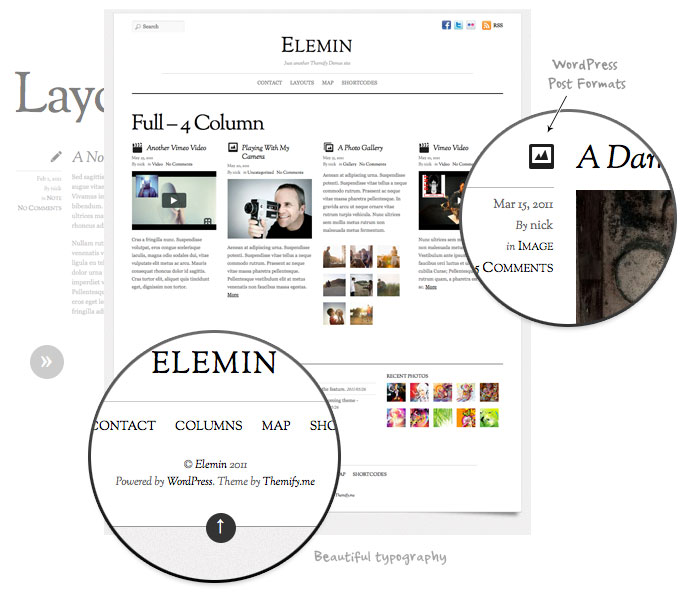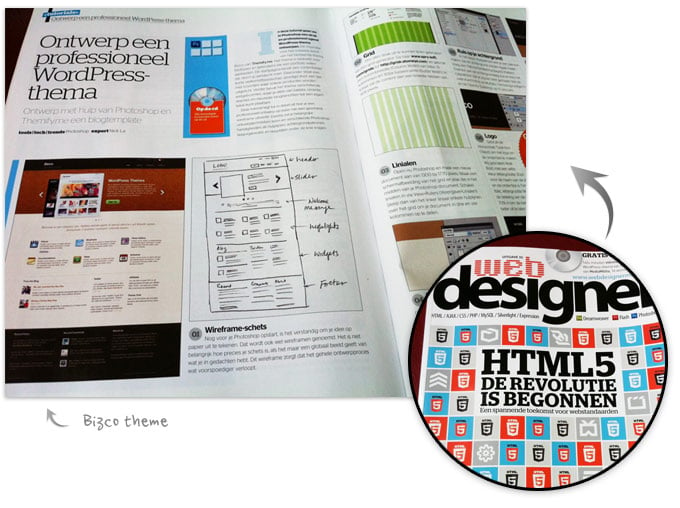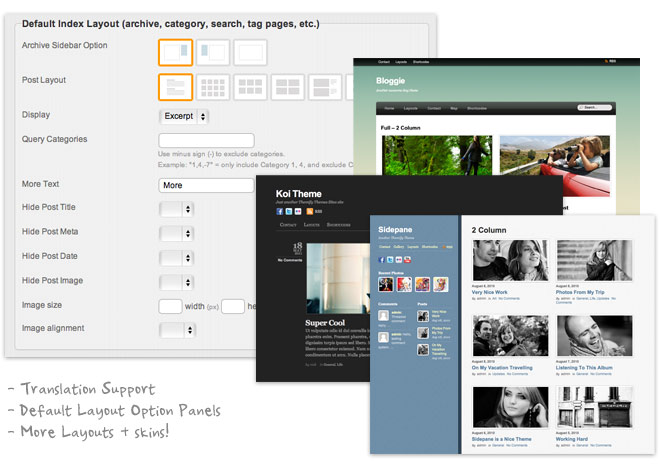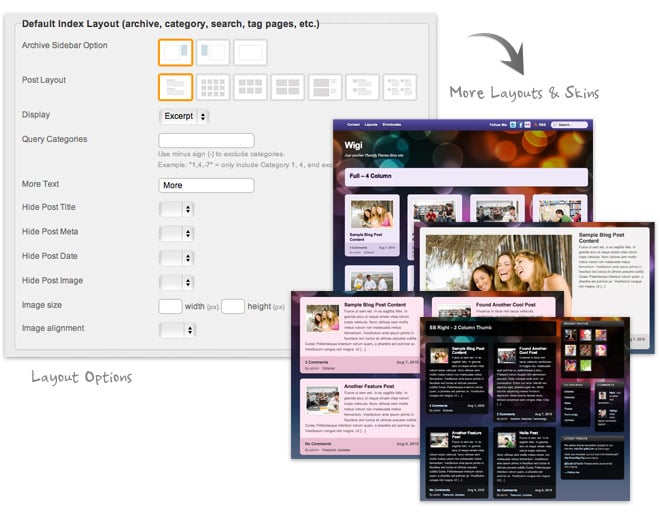After ThemeMin, Elemin is the second miminal theme added to our collection. Elemin has great sense of typography, good white space balance, and minimal graphics. It is a piece of art crafted with modern technology — Google font, CSS3, Javascript and HTML5. WordPress post formats was incorporated which allows you to write about various post types such as photo, gallery, video, quote, etc. (very much like Tumblr). The design is completely fluid and responive. This means the layout automatically adapts based on the user's viewport. The layout never breaks no matter of what screen resolution it is being viewed on. It works on all desktop and most mobile devices such as iPhone, iPad, Android, and Blackberry. To see this in action, visit our demo site and resize your browser window or check it with a mobile phone.
Get it now: use the coupon code "elemin" for a 30% discount off this theme until June 7, 2011.




